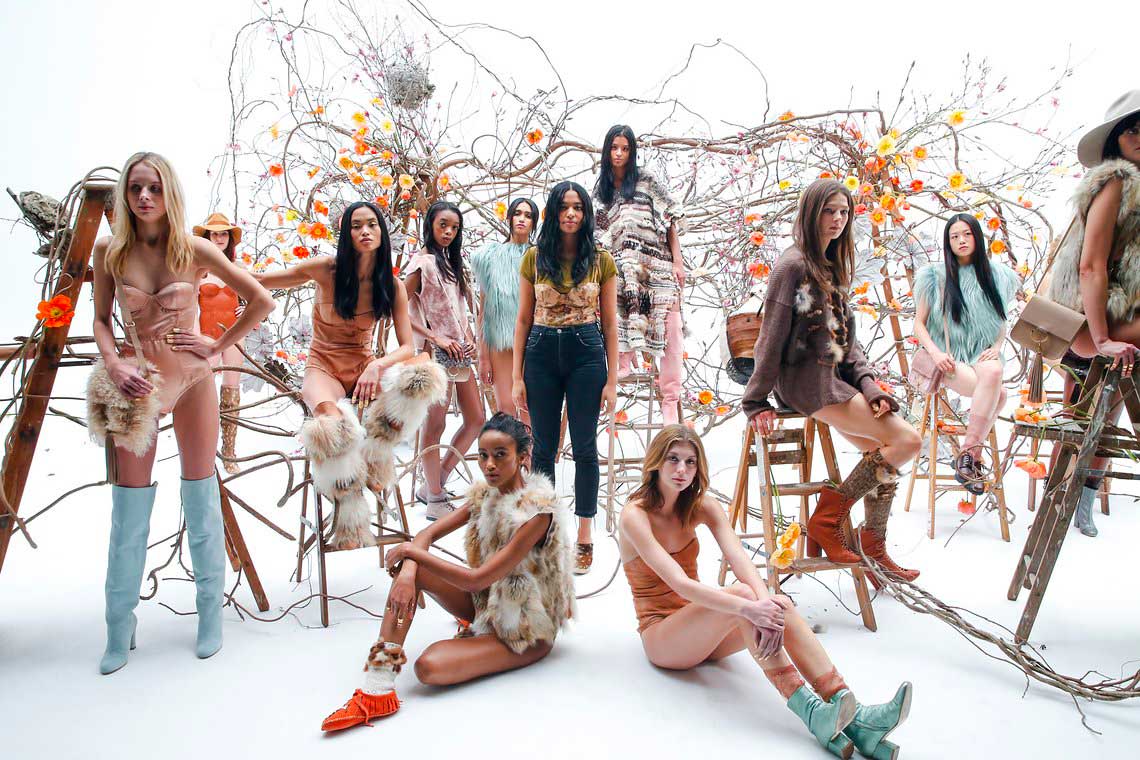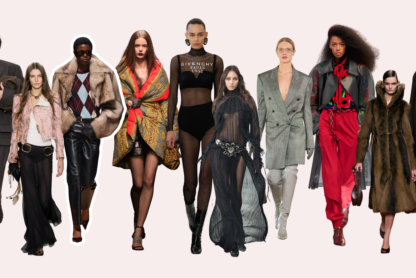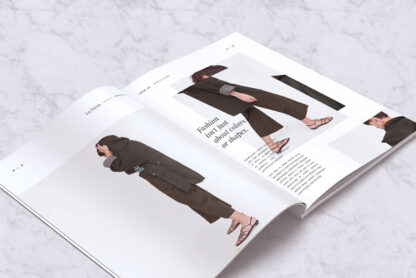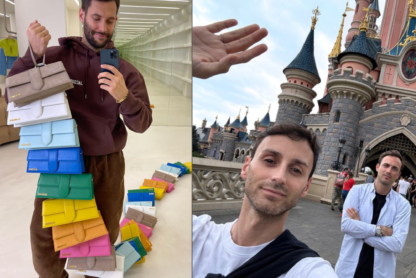The world of fashion can’t be imagined without them: Hectic spectacles behind the scenes, where tension becomes tangible and adrenalin a constant companion; the fashion stylist, buyers, editors and influencers crowding in front of the fashion week tents and street photographers capturing new styles. All these moments are products of these three constructs: fashion showrooms, fashion presentations and fashion weeks that guide new movements, trends and tones in fashion, that control retail developments and style evolutions. But how do they operate?
FASHION WEEKS – A BRIEF SUMMARY OF THEIR HISTORY AND FUNCTION
The fashion circle has always seemed to be a closed treasure chest – Everybody would love to have access to the opulence, and glamour, but only a selected group could turn the key.
Indeed, the fashion industry builds on exclusivity and makes it difficult to be accessed. The invention of fashion shows and later on, fashion weeks, was constructed on that same principle: elevating elitism and sales.
The first thought of a fashion show was brought to the world of chic and class by fashion designer and “the father of Haute Couture”, Charles Frederick Worth. With the rise of attention on the designs of the British fashion designer who was located in Paris, customers started to travel to his atelier to examine his Couture works. Firstly, presented on mannequins or in miniature, Worth concluded to show his clothing on real women. The so-called “fetes” became popular during the 1800s and 1900s. This milestone in the evolution of the classical fashion week was followed by the “Salon shows”, mostly conducted in Europe and cities such as Paris. Private clients were invited to see collections and pieces.
The fashion niche grew more popular; the elite and clients more aware and interested in a fashion maker’s business and skill. Designers provided the models with numbers, for clients to remember the designs they were interested in. Together with Paul Poiret, one of the first designers to understand a woman’s fashion needs, Lady Duff-Gordon or “Lucile”, another leading fashion design voice during the 19th and 20th century, guided the concept into the direction of the modern fashion week show.
In 1903, the Ehrlich Brothers welcomed the first fashion show in their store in New York city. Sustaining its social, creative and high-class experience, the two invited guests to the shows, where designs were introduced in a spectacular and entertaining manner. The principle was adopted and continued by designers, stores and brands, causing waves and stampede of media and press requests. To attend a show and experience the atmosphere and social circle became desirable. International clients visited Parisian fashion designers to not only purchase but live a piece of glamour.
World War II challenged the construct during 1943 – The Nazi occupation slowed down the development and endangered the show’s glamorous façade to fall. During this uncertain time, American fashion publicist Eleanor Lambert risked a step and wrote fashion history by commencing to promote newcomer American fashion designers and the invention of the “New York Press Week”. Two years later, the Chambre Syndicale de la Haute Couture, founded 1868 in Paris, commenced requesting designers to create two seasonal collections a year. The second city to rise from the aches was Milan, in 1958 with the announcement through the National Chamber of Italian Fashion. In 1973, the French Fashion Federation launched their fashion week concept, followed by the British Fashion Council and London Fashion Week in 1984.
During the 1990s, the major four fashion metropoles: New York City, London, Milan and Paris, were recognised as such and still remain the cities, defining emerging trends and social evolutions.
With the rise of the Internet and social media platforms, designers and Fashion Houses were increasingly confronted with the pressure to create and produce. What commenced with two shows a year – commonly in February and September – and the core idea to give a sneak-peak on the collections that would be sold in the department stores six months after the shows, shifted into the invention of additional men’s, women’s, Haute-Couture, Resort and Capsule collections – all presented to different times during the year. Today, the fashion weeks are spread throughout the months, February, April, May, June, September and October. The purpose remains: fashion weeks still serve as a piece of exclusivity, the dream. The shows, spectacles and locations grew bigger and nowadays seem to decide upon a House’s place in the fashion world. It remains a tradition, even if questioned and reworked due to issues such the excessive consumption and negative effects the productions of the shows have on the environment. They serve as an introduction and catapult for new talents; are a tool to open the door to the inner circle – Their social and creative aspect remains present and admirable. Ready-To-Wear, Ready-to-buy lines and the broadcasting opportunity on social media just added the pace and accessibility part to it, transmitting enthusiasts the feeling to be included.
FASHION PRESENTATIONS AND THEIR PURPOSE
With the variety of fashion weeks held during a year, brands find themselves confronted with high pressure to compete, sustain and overwhelm their audience. But the high investment that flows into these spectacles of theatre-esque fashion shows is not maintainable for every House. That is where fashion presentations enter the stage.
Presentations are disassembled fashion shows, enabling the observer and fashion folks to get a more detailed and engaging insight and view on the clothing, fabrics, features and silhouettes. Presentations serve the same purpose as runway shows, but in a more intimate climate – The purpose is to introduce new collections to the fashion folks, buyers, editors, stylists and influencers. With the increasing attention on the social media sphere, the venues and set-ups serve as ideal photo locations and story snacks for Magazines and bloggers socials.
The concept of fashion presentations firstly debuted in the early twentieth century. While juxtaposed to the classical fashion runway spectacles, the construct of a fashion presentation was not taken that seriously in the beginning of their debut. Today, they belong to a fixed part of the fashion week schedule. Quoting Fashion United, London Collections Men week 2016 in London spanned 32 catwalk shows, 25 presentations, 55 designers in the Designer Showrooms, 5 digital presentations and 21 brands hosting events. They represent an interesting alternative, an intimate moment, the calm after the storm, transmitted through ‘still lives’.
The curated looks are being showcased in a styled setting, often in front of an artistic/ styled background, related to the collections – mimicking foreign places, abstract artworks, and awarding the viewer with a 3D experience. While during fashion shows one model can serve several looks, presentations are required to have one model for each look, hence the collections presented tend to be smaller but as sophisticated and with a lot of attention to detail. “The take up of presentations has been accelerating recently because the digital environment has allowed it. Before 2000, catwalks shows were mainly a trade event. Presentations are digital and screen friendly. They allow for a creative 3D experience, and we’re seeing them become much more of an art form where the audience can get closer to the collection and press images are high quality,” Jan Miller, a strategic consultant from the Centre for Fashion Enterprise told Not Just a Label.
SHOWROOMS AND THEIR PURPOSE
While fashion shows and presentations serve as a tool to introduce new collections to fashion editors and professionals, to set trends and eventually sell, fashion showrooms solely serve the latter. They are the bridging tool connecting brands to the final modules – retail and consumer. “Showrooms is another step to better cater to consumer needs,” Andres Mendoza-Pena, a partner in the retail practice of global strategy and management consulting firm A.T. Kearney, told Retail Dive. Early last year Glam Observer published an exclusive interview with Darius Herges, CEO of the German Showroom Orderlounge Fashion GmbH. He briefly explained the service of the showroom and responsibilities connected to the field: “In general a sales job in fashion is split into two parts. One part is the preparations of the upcoming sales season, which means visiting clients, developing strategies, budgeting and forecasting the new sales season, studying sale out reports and making appointments for the upcoming sales season. When the sales season starts, you get in touch with the collections and work with the product itself. It can be clothes, shoes, or accessories. During this period, I have customer appointments in our showrooms, in which I explain the new collections and sell them to my clients. In some cases, I have to go the customer and pitch them the collection examples.”
A showroom stocks seasonal collections from one specific brand to a broad selection of House’s, which change with each season. They serve the purpose of giving clients, buyers and department stores an insight into new trends and customer demands, while those clients can directly see, touch and try the pieces on to evaluate, if they suit their imagination and concept. Clothes can be pre-ordered for the upcoming seasons and new collections of department stores. “Luxury will always do the showroom model because it’s an entirely different approach — it’s seeing clothes off the runway in a commercially led environment so buyers can inspect it and make their decisions,” Liz Bacelar, an industry consultant who is co-founder of The Current Global, tells Vogue Business. Today, demanded fashion Houses own fashion showrooms in the major metropoles for marketing and selling reasons. They invite stylists and influencers to visit and try on exclusive pieces for the following show days and elevate the pieces directly to the customer. Quoting FashionUnited, 8 percent of the fashion labor in the US are employed by wholesale showrooms.
With the sudden entry of Covid-19, these physical presentation platforms shifted to the digital sphere and a wave of virtual showrooms stormed the fashion world. Gadgets such as NuOrder sprouted. “Virtual showrooms are really important to tell the brand’s story, but let’s back it with core commerce functionality rather than encourage these two disparate worlds,” Wells, NuOrder Co-founder tells Vogue.
Article by Lilly Meuser








